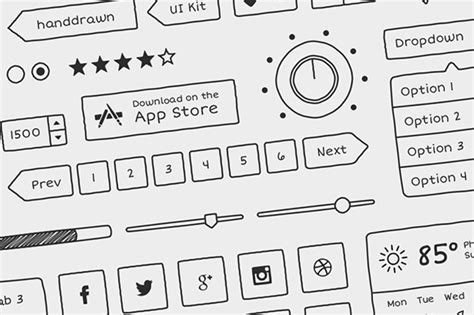In the realm of web and app design, there’s a growing trend that’s capturing the interest of both seasoned designers and newcomers alike: the use of UI elements with a hand-drawn, sketchy look. Tools such as Rough.js, which powers applications like Excalidraw, are becoming valuable assets in the designer’s toolkit. This trend isn’t merely about aesthetic appeal; it’s rooted in a deeper philosophy surrounding design feedback and the iterative process.
One of the primary reasons developers and designers are gravitating towards sketchy UI elements is their utility in the early stages of design. By presenting a prototype that appears unfinished or hand-drawn, it signals to stakeholders and users that the design is in progress. This visual cue can shift the focus from critiquing design aesthetics to more meaningful feedback on functionality and user flow. As one user pointed out, ‘If the product looks done then the feedback you will get assumes that it is done.’ This perspective highlights the importance of visual cues in managing user expectations and obtaining constructive input early in the design process.
An interesting discussion emerged around the topic of skeuomorphism versus flat and material design. Some users expressed a strong preference for the tangible, real-world metaphors provided by skeuomorphism, while others appreciated the simplicity and focus of flat design. ‘Bring back skeuomorphism. I hate flat and material design,’ one commenter noted, illustrating a sentiment that visual cues derived from reality still hold significant appeal. Conversely, some felt that skeuomorphism, especially in its extreme forms, was distracting and unnecessary. The Apple experience, with its highly stylized interfaces, received mixed opinions, showcasing how deeply personal and varied design preferences can be.
The technical community also brought valuable insights into the licensing and legal aspects surrounding these design tools. A notable concern was raised regarding Rough.js and its adaptation of algorithms from the LGPLv3 licensed Handy library. This raises important questions about the ethical and legal implications of using and adapting open-source software. Developer awareness and due diligence in licensing are crucial to ensuring compliance and maintaining the integrity of shared codebases.
Beyond the practical and legal considerations, there is a nostalgic element to the hand-drawn aesthetic that resonates with many. ‘Reminds me of Balsamiq,’ stated one user, referring to the popular wireframing tool known for its sketchy UI components. These elements not only evoke a sense of simplicity and informality but also harken back to a time when mockups were physically sketched on paper. This nostalgia is more than just fond memories; it speaks to the effectiveness of lo-fi prototypes in initiating dialogue and collaboration among team members.
The notion that sketchy UI elements can elicit more open and honest feedback is supported by many in the design community. As one user explained, the less polished the prototype, the more likely users are to provide radical suggestions rather than minor tweaks. This approach is particularly effective during the ideation phase, where the goal is to explore a wide array of possibilities rather than refine specifics. Presenting multiple radical versions of a design can further facilitate this broad-spectrum feedback, guiding the project towards a more innovative and user-centric solution.
Design tools like Excalidraw, Rough.js, and Balsamiq continue to be popular because they cater to a fundamental need in the design process: the ability to iterate rapidly and gather meaningful feedback without getting bogged down in aesthetic details. Whether used to convey a work-in-progress, foster a collaborative environment, or simply add a touch of whimsy and creativity, these tools offer more than just a visual style—they represent a process-oriented philosophy that prioritizes user input and iterative refinement. In an age where design can often feel formulaic, the sketchy, hand-drawn look provides a refreshing and effective approach to UI and UX development.


Leave a Reply